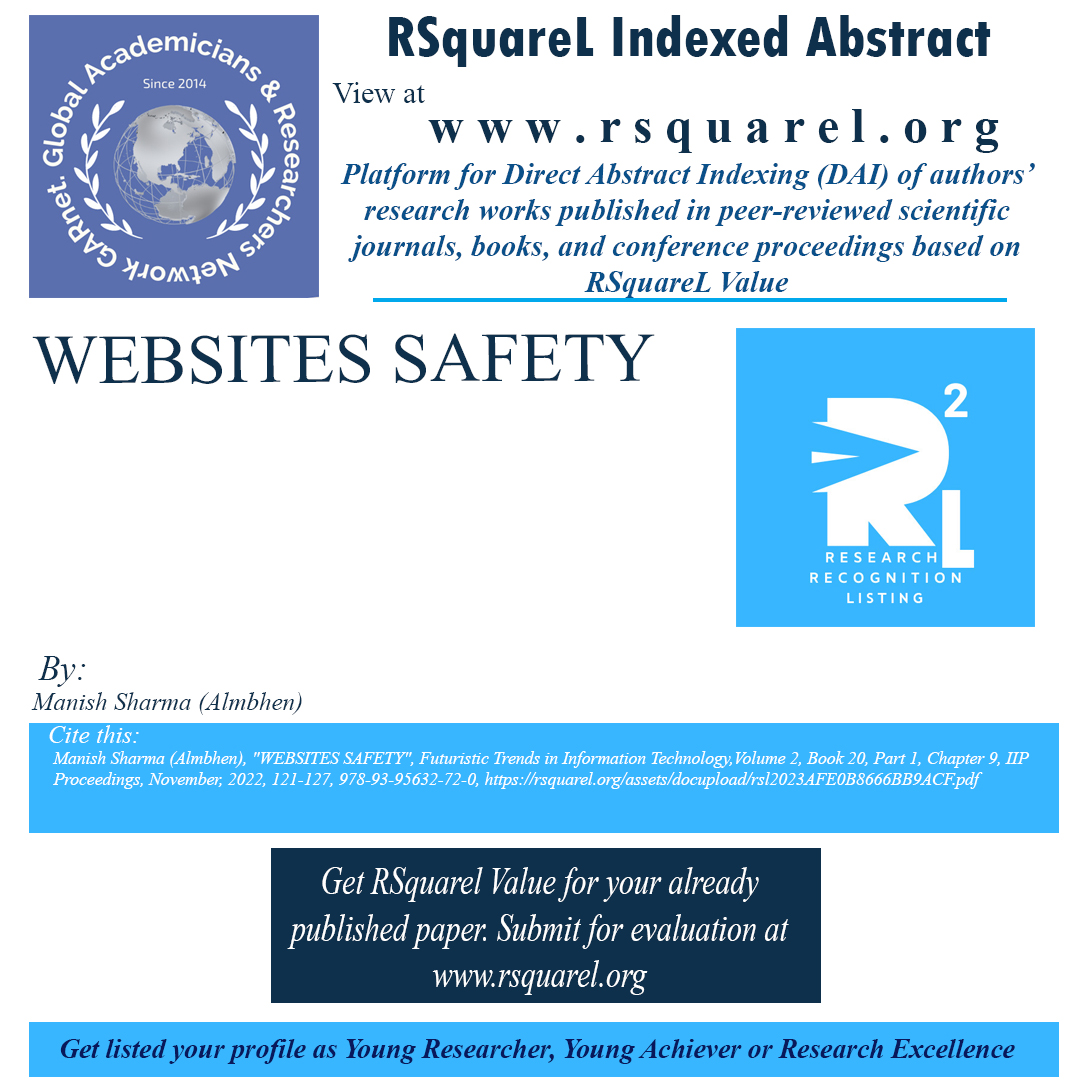editedbook
Publication: IIP Proceedings Year: 2022, Month: November Page No: 121-127, ISSN/ISBN: 978-93-95632-72-0, DOI/Link: https://rsquarel.org/assets/docupload/rsl2023AFE0B8666BB9ACF.pdf
WEBSITES SAFETY
Area/Stream: Information Technology, Authors: Manish Sharma (Almbhen) Keywords: IIPV2B02009Digital protection, what is network protection? Digital protection preparing, Data security, Network security, Web security, IT security, Digital dangers, Security dangers Book Name /series: Futuristic Trends in Information Technology,Volume 2, Book 20, Part 1, Chapter 9Publication: IIP Proceedings Year: 2022, Month: November Page No: 121-127, ISSN/ISBN: 978-93-95632-72-0, DOI/Link: https://rsquarel.org/assets/docupload/rsl2023AFE0B8666BB9ACF.pdf
Abstract:
Site security is an application set up to know that site information is not presented to cybercriminals on the internet. These activities help to safeguard delicate information, equipment, and programming inside an internet-based webpage from the different assortments of assaults that presently exist. Right security arrangements will be the safeguard of door of the website from the security dangers. For examples, 1st DDoS assaults: These assaults can crash the site altogether, shutting down all usefulness and making it unavailable to guests. 2nd Malware: Another way to say "noxious programming," malware is likewise a very normal danger acclimated take delicate client information, dispersing spam, permittingcybercriminals to get to your site, and the sky is the limit from there. 3rd Blacklisting: It is in many cases what could befall your site assuming that web search tools find malware. 4th Vulnerability exploits: Cybercriminals can get to a site and information put away on it by taking advantage of frail regions during a site, similar to an obsolete Word Press module. 5th Demolishment: This assault replaces the site's substance with a cybercriminal's unfriendly substance. Adding site security best practices to spot will save the guests from these dangers also. 6 th Stolen Data: From email locations to installment data, programmers habitually track guest or client information put away on a site. 7th Spamming plans: Spamming doesn't simply occur in email - a few assaults appear as sites that appear to be real but are intended to fool the client into giving delicate data. 8th Session hijacking: Few cyberattacks can assume control over a client's meeting and power them to require undesirable things on a site. 9th Malicious redirects: Certain assaults can divert guests from the situating they expected to head out to a malevolent site. 10th Search engine optimization Spam: Surprising connections, pages, and remarks are likewise put on a site to confound your guests and direct people to malevolent destinations
Cite this: Manish Sharma (Almbhen),"WEBSITES SAFETY", Futuristic Trends in Information Technology,Volume 2, Book 20, Part 1, Chapter 9, November, 2022, 121-127, 978-93-95632-72-0, https://rsquarel.org/assets/docupload/rsl2023AFE0B8666BB9ACF.pdf
Views: 4181
Download File
News
